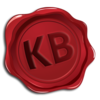Alpha channels

This article is part of the Extended Second Life Knowledge Base that includes advanced and specialized information. This information was originally provided by Linden Lab, but is not actively maintained nor guaranteed to be accurate. Linden Lab does not certify nor assume any responsibility for this information.
See the official Second Life Knowledge Base for the most current information.
What are alpha channels?
Transparency information in TGA and PNG textures, which can be uploaded with the Second Life® Viewer, is stored as an additional grid of grayscale data called an alpha channel. The alpha channel's pixel values, ranging from black to white, determine the texture's degree of transparency. Then, transparent textures are used to create organic shapes such as flame particles, trees, and clothing with ripped fabric ââ¬" just about anything where visibly boxy dimensions are undesirable.
How do I use alpha channels and get clothing templates?
Different image editors use similar concepts but have different specific implementations. You should consult your preferred paint program's manual and find knowledgeable people who have already done what you want, or may know how.
Alpha channels are a critical part of advanced clothing creation, and two of the most popular resources are the Texture Tools and Clothing Tutorials pages. For personal help from other Residents, visit the Texturing Tips forum.
I have Adobe Photoshop 7 and it doesn't work when I try to save alpha channels. What's wrong?
The original version of Photoshop 7 had a TGA export bug. Upgrade to version 7.01 or newer to solve this problem.
What image formats should I use for upload into SL?
TGA (32-bit supports alpha channel), PNG (24-bit supports alpha channel), or BMP. When you upload an image, the Viewer internally converts it to JPG2000 for optimized future transmission. For best quality, try to avoid uploading JPGs; their already-compressed quality degrades further because of the double conversion.
What are good sizes for textures?
Textures should be as small as possible ââ¬" texture size is highly context-sensitive so it takes experienced artistic judgment. For example, if you're texture-mapping a tiny pebble, its detail can be negligible compared to a giant tree in the same scene. For general use, 512x512 is a fair balance.
Even if you have a fast Internet connection and top-end graphics card, your computer can only display a finite amount of texture data. When you upload images into Second Life, width and height are automatically resized to nearest powers of two (16, 32, 64, 128, 256, 512, 1024). If you find this results in unwanted stretching/squishing, you may prefer to use your image editor's built-in resampling to optimize proportions prior to upload.